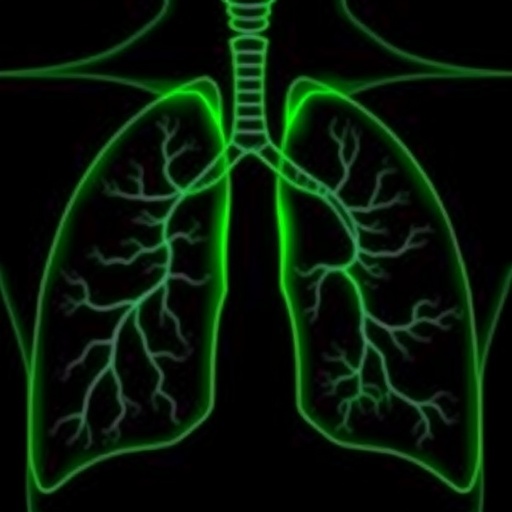Recent research has shed light on a novel application of propofol, a well-known anesthetic, beyond its traditional use in surgery. A study conducted by Wang, Zhou, and Guo investigates propofol’s impact on lung cancer metabolism specifically through its inhibition of glycolysis. Glycolysis is a fundamental metabolic process crucial for cancer cell proliferation, and substances that can effectively alter this process may hold therapeutic potential in treating cancers.
The study dives into the biochemical pathways influenced by propofol, focusing on the role of TPI1, or Triosephosphate Isomerase 1—a critical enzyme in the glycolytic pathway. This enzyme facilitates the interconversion between dihydroxyacetone phosphate and glyceraldehyde-3-phosphate. By targeting such pivotal enzymes, researchers hope to develop innovative strategies that can disrupt cancer metabolism and growth.
Furthermore, the role of deubiquitination modifications – cellular processes that influence protein longevity and function – cannot be understated. The study highlights how propofol impacts the expression and function of TPI1 through its interaction with USP5, a deubiquitinating enzyme. This discovery opens new avenues for understanding tumor biology and the molecular intricacies that govern cancer cell survival and replication.
Research teams have long suspected that metabolic manipulation could provide therapeutic avenues against lung cancer. Propofol’s dual role as an anesthetic and a metabolic modulator raises intriguing questions regarding its broader implications in oncology. As findings unfold, the need for further empirical trials will determine the safety and effectiveness of utilizing propofol in cancer treatments.
The burgeoning idea that existing anesthetics can contribute positively to cancer therapy signifies a paradigm shift in how the medical community perceives the multifaceted roles of common drugs. Traditional research often relegates these agents strictly to their anesthetic capabilities, whereas their metabolic implications are rarely explored in depth. Wang and colleagues’ findings challenge this notion by highlighting specific molecular pathways and interactions that propofol influences.
Additionally, the interplay between propofol administration and cancer progression invites substantial discourse regarding patient outcomes. What if anesthetic protocols could one day integrate a more therapeutic approach, actively combating cancerous developments during surgical procedures? Such advancements could lead to innovative practices in perioperative care, redefining standard practices across surgical oncology.
Moreover, investigations into propofol’s influence on cancer metabolism dovetail with current research trends emphasizing personalized medicine. Understanding individual metabolic profiles can facilitate tailored therapeutic strategies, aligning drug selection with patients’ unique biological circumstances. This alignment is paramount in oncology, where treatment response varies significantly across patient populations.
In the broader context of cancer research, the elucidation of propofol’s mechanism provides a compelling case for reevaluating existing pharmacological agents. This not only underscores the need for innovative approaches in drug repurposing but also emphasizes the importance of interdisciplinary research that intertwines pharmacology, genetics, and oncology.
The implications of Wang et al.’s work extend beyond theoretical exploration, as expectations mount for clinical applications of their findings. The integration of propofol as a component of atypical cancer therapeutics could revolutionize lung cancer treatment paradigms. Such advancements reflect a growing understanding of the metabolic dysregulation that characterizes tumorigenesis, paving the way for more effective treatment modalities.
Although it may take time for these findings to transition from bench to bedside, the anticipation surrounding their implications is palpable. Oncologists and researchers must now contemplate integrating anesthetics into their treatment regimens creatively. The potential repurposing of propofol illuminates the collaborative energy resonating through scientific inquiry, as diverse specialists lend their expertise to the multifaceted battle against cancer.
With the groundwork laid by this study, future research endeavors will likely focus on in vivo models to further investigate these mechanisms in a living organism context. The ability to investigate propofol’s efficacy and safety in real biological systems remains a crucial next step in transforming theoretical frameworks into impactful treatments.
As the discourse surrounding the use of propofol in cancer treatment gains momentum, it is essential for the scientific community to maintain a critical eye on both its advantages and potential limitations. Being vigilant about the dosage, timing, and patient-specific responses will dictate the success of repurposing propofol in therapeutic regimens.
In conclusion, the ambitious research presented by Wang and his colleagues marks a promising frontier in oncology, where a common anesthetic demonstrates the potential for profound impact on cancer metabolism. As investigations unfold and trials commence, the fusion of anesthesiology and oncology could very well catalyze the next wave of cancer therapeutic strategies, harnessing existing drugs to reimagine cancer care fundamentally.
Subject of Research: Impact of propofol on lung cancer glycolysis and TPI1 regulation.
Article Title: Propofol Inhibits Lung Cancer Glycolysis by Influencing the Deubiquitination Modification of TPI1 Regulated by USP5.
Article References:
Wang, Y., Zhou, H., Guo, W. et al. Propofol Inhibits Lung Cancer Glycolysis by Influencing the Deubiquitination Modification of TPI1 Regulated by USP5.
Biochem Genet (2025). https://doi.org/10.1007/s10528-025-11243-8
Image Credits: AI Generated
DOI:
Keywords: Propofol, Lung Cancer, Glycolysis, TPI1, USP5, Metabolism, Deubiquitination, Anesthetic Repurposing, Cancer Therapy, Personalized Medicine.




